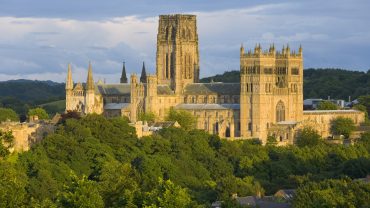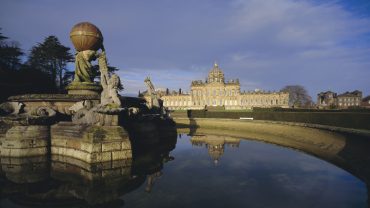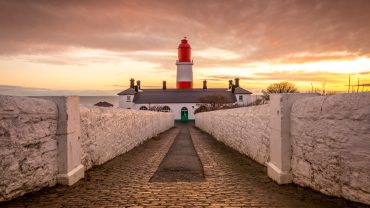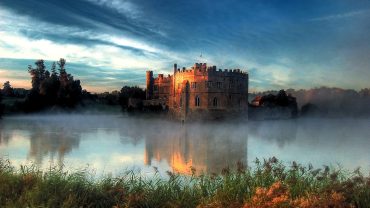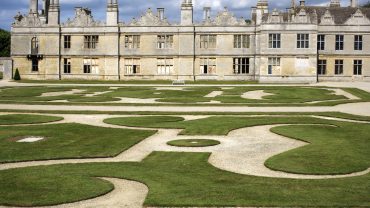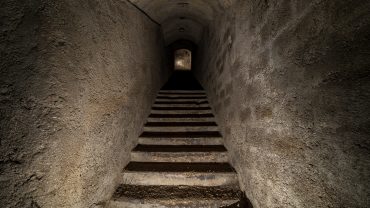Big skies, winding waterways and a sweeping coastline – Norfolk is a county that brims with natural beauty. But beyond the golden sands of Holkham Bay, the wild beauty of the Norfolk Broads and the charm of villages like Burnham Market and Blakeney, lies something even more spectacular – a dazzling collection of historic houses and estates. They’re not just some of the best stately homes to visit in Norfolk, they rank among the finest in the whole of England.
From royal retreats to Palladian masterpieces, Norfolk’s position on the edge of the North Sea and its rich agricultural heartland made it a county of affluent landowners with influence, ambition and grandeur. These houses tell stories of queens, prime ministers, admirals and aristocrats, and each one has left its legacy on the landscape.
Today, the county is a treasure trove of pristine parklands, elegant facades and opulent interiors, where history and heritage come alive. Let’s discover the very best historic houses in Norfolk.
Sandringham House
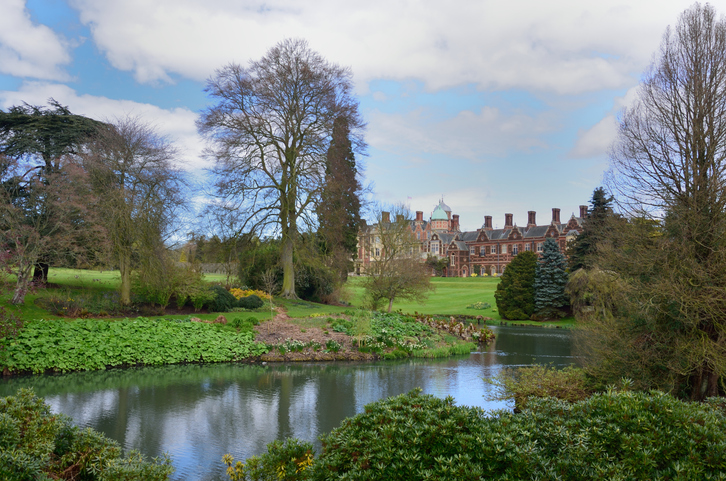
The world-famous Sandringham House (Credit: Pauws99 via Getty Images)
Not just one of the most famous stately homes in Norfolk, but one of the most well-known in the whole country, Sandringham sits in the heart of 20,000 acres of rolling Norfolk parkland, near the coastline of the Wash. The estate was bought in 1862 by Queen Victoria as a twenty-first birthday present for her son, the future King Edward VII, who wanted a countryside retreat close to London. Finding the original house too small after a few years, Edward commissioned architect AJ Humbert to build the current Sandringham House which he completed in 1870. This red-brick, Jacobean-style mansion was designed for Edward and his wife, Princess Alexandra, showcasing grand gables, bay windows, and modern Victorian comforts. Edward’s friend, Lord Carrington, is said to have called Sandringham ‘the most comfortable house in England.’
HRH Queen Elizabeth II loved the house, spending her winter months here, while the estate’s gardens, museum, and church of St Mary Magdalene offer fascinating glimpses into royal life. One of the most popular historic houses to visit in Norfolk with around 85,000 visitors a year (plus an extra 20,000 for the gardens), you can peek inside the rooms where history‑making monarchs once relaxed – proof that behind all the royal pomp, Sandringham remains very much a family home.
Blickling Hall
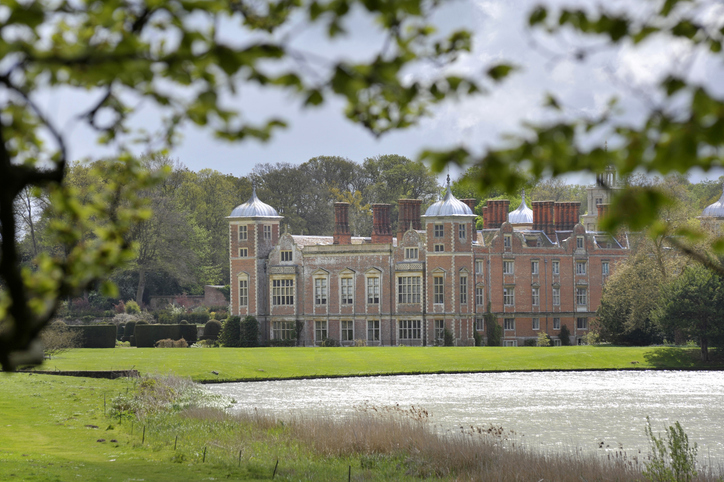
Blickling Hall, one of England's great Jacobean mansions (Credit: Grahamphoto23 via Getty Images)
Blickling Hall is a stunning Jacobean mansion nestled in about 4,600 acres of Norfolk parkland near the village of Blickling, about halfway between Norwich and Cromer, and is one of the most popular stately homes to visit in Norfolk. The current house was built in the early seventeenth century by architect Robert Lyminge for Sir Henry Hobart, a prominent lawyer and Lord Chief Justice of the Common Pleas. It was constructed on the site of an earlier Tudor manor that was once in the possession of Thomas Boleyn, the father of Anne Boleyn, who’s believed to have spent part of her childhood here and according to some, may even have been born here.
One of the most beautiful historic houses in Norfolk, Blickling has passed through a number of prominent families, including the Kerr family who have held the title of Marquess of Lothian since 1701 before gifting the house to the National Trust in 1940. Today, the grand house features original Jacobean architecture, magnificent family portraits, and one of England’s most important historic libraries with around 15,000 books and manuscripts, some dating back more than 1,200 years.
Oxburgh Hall
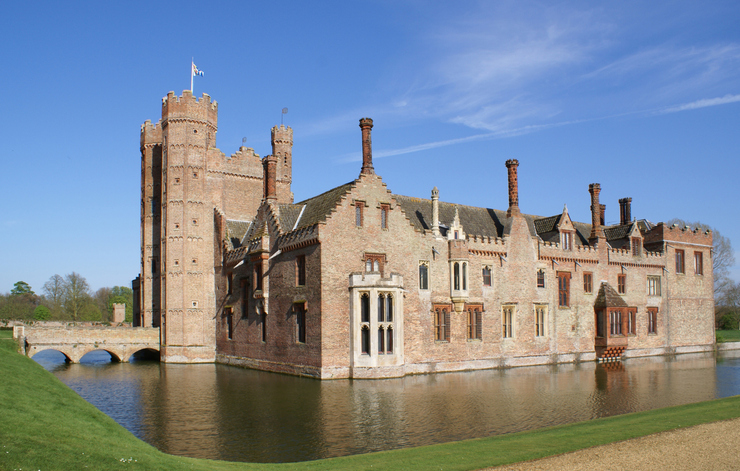
Oxburgh Hall is home to some true Tudor treasures (Credit: Raedwald via Getty Images)
Oxburgh Hall is a striking moated manor house near King’s Lynn. It was built sometime after 1476 and completed by 1482 for Sir Edmund Bedingfeld, a powerful courtier during the reign of King Edward IV. One of the most famous stately homes in Norfolk, Oxburgh was constructed in red brick – a fashionable and expensive choice back then – and combines fortress-like features such as its dramatic gatehouse with the comforts of a grand family home. The Bedingfeld family has lived here for over 500 years, making Oxburgh one of the longest-held family estates in England.
The hall’s fascinating history includes a secret priest hole used to hide Catholic clergy during turbulent times of religious persecution which was built by Nicholas Owen, the primary builder of priest holes during the reigns of Elizabeth I and James I of England (James VI of Scotland.) This important historic house in Norfolk is also home to the famous Oxburgh Hangings, intricate needlework bed hangings by Mary, Queen of Scots and Bess of Hardwick while Mary was held in captivity. Restored in the nineteenth century with help from architect John Chessell Buckler and – possibly – Augustus Pugin (although the latter’s involvement is disputed), Oxburgh’s peaceful gardens and historic interiors invite visitors to step back into the fascinating world of Tudor England.
Holkham Hall
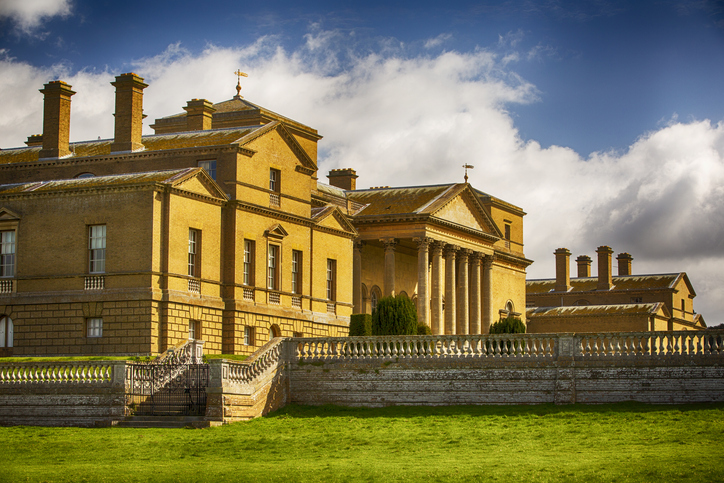
Holkham Hall is a Palladian masterpiece (Credit: Ashley Cooper via Getty Images)
Holkham Hall is one of the grandest and most elegant examples of Palladian architecture in England and one of the most stunning historic houses to visit in Norfolk. The house is near Wells-next-the-Sea on the Norfolk coast and was constructed between 1734 and 1764. Holkham was built for Thomas Coke, the 1st Earl of Leicester, inspired by his Grand Tour of Europe and designed by the renowned architects William Kent, Lord Burlington, and Matthew Brettingham. The house showcases a striking symmetry with a massive central block flanked by four corner pavilions, all built from local yellow brick designed to evoke the grandeur of Italian Renaissance villas.
Inside, the Palladian masterpiece is grand, yet surprisingly intimate, with a vast Marble Hall made from Staffordshire alabaster, a magnificent Saloon with red velvet walls, one of England’s finest collections of classical statuary and fine furniture, and an art collection – including pieces by Gainsborough, van Dyck, Rubens and Canaletto – once described as ‘without equal in an English house’.
Baconsthorpe Castle
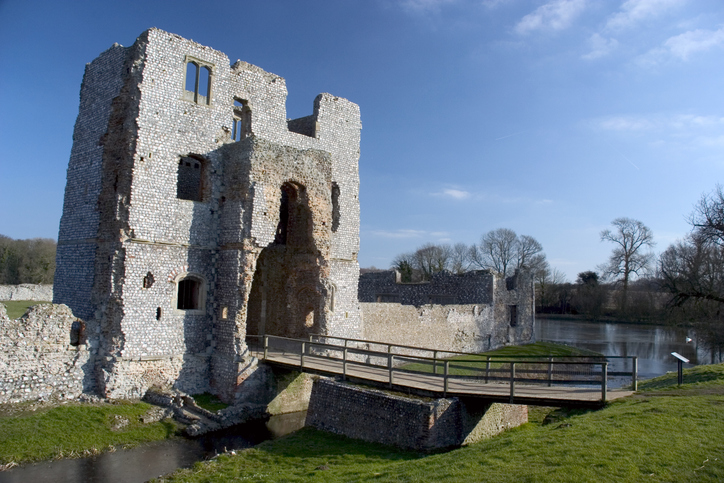
Baconsthorpe Castle was one of Norfolk's great manor houses (Credit: Thomasaurus via Getty Images)
Just nine miles from the Cromer coast, Baconsthorpe Castle was a fascinating fifteenth century fortified manor house built by the ambitious Heydon family. Construction began around 1460 by John Heydon, a lawyer rising in power but, according to contemporary reports, someone who also had many enemies. He designed it as a high-status home complete with a moat, imposing gatehouses, turrets, and a deer park. The castle cleverly (and, perhaps, sensibly) combined defensive features with the elegance expected by a wealthy landowner, although it was more a symbol of status than a fortress.
Baconsthorpe was certainly one of the most imposing stately homes in Norfolk, and over the centuries, the Heydons became prosperous farmers, expanding the home and adding formal gardens and a decorative lake. Sadly, financial troubles led them to demolish much of the castle in the 1650s, but the striking outer gatehouse survived and remained a family home until the twentieth century. Today, English Heritage manages the atmospheric ruins that invite visitors to explore this richly layered slice of Norfolk’s past.
Earlham Hall
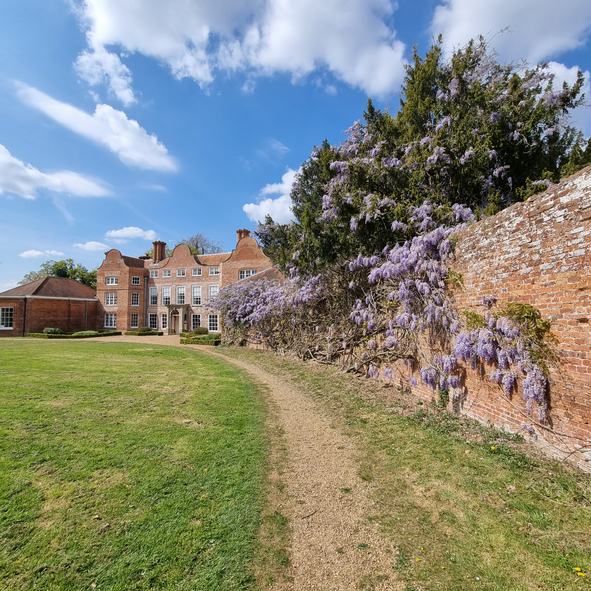
Earlham Hall, from a country house to a law school (Credit: Emma Mortlock via Getty Images)
Earlham Hall, located just west of Norwich, is a beautiful country house built in the 1640s. Situated on the edge of the former medieval village of Earlham, it became the longtime home of the influential Gurney family, famed Norwich Quakers and pioneering bankers whose Gurney Bank became Barclays Bank in 1896. The Gurneys were known for their social activism, with prison reformer Elizabeth Fry spending her childhood here. The house blends classic seventeenth century architecture with later alterations, including a notable “handsome, long, and lofty” dining room added by MP Edward Bacon in the eighteenth century.
Over the years, Earlham Hall played many roles – from a family home and social hub to wartime accommodation. When the University of East Anglia was founded in 1963 Earlham Hall became the university’s administrative centre. Today, what is undoubtedly one of the prettiest historic houses in Norfolk serves as the UEA Law School.


